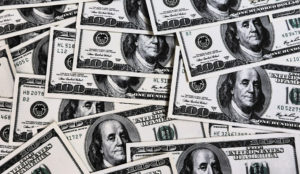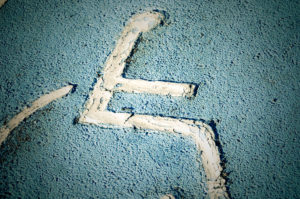Marie Cocco: The Value of a Penny
Using pennies in everyday transactions is a time-consuming hassle. But might their worth lie therein?WASHINGTON — I am not one who stoops for a penny.
Even as little kids who scoured the dusty mat beneath my father’s recliner for the trove of coins that would fall from his pant pockets as he relaxed, my sister and I did not exult at the discovery of one-cent copper. It was the quarters we coveted, their larger and shinier appearance visible proof of their greater worth.
Certainly I developed no fondness for the penny when I worked my way through college as a bank teller and routinely was presented with containers — the minimum size seemed to be that of a mayonnaise jar — filled with pennies that some thrifty customer had hoarded. The proud saver would approach the teller’s window ready to turn in the booty, only to be told curtly that the bank couldn’t accept them unless they first were rolled — and here, sir or madam, are the papers you can take to that table across the lobby to get started.
It is only in recent years that I’ve come to appreciate the penny, a devotion that may well have come too late. The U.S. Mint reports that it now costs the government more than one cent to produce a penny (and more than five cents to make a nickel) and so a recurring debate has been rekindled over whether it is worth it to keep making a coin that millions of Americans consider to be worthless.
The soaring cost of metals — a penny is mostly zinc, encased in a thin copper coating — is the culprit. Though the mint still makes a profit overall, there are a few members of Congress (notably Rep. Jim Kolbe of Arizona, who has pushed an anti-penny agenda for years) who think penny production is wasteful and should be abandoned. Proposals to eliminate the penny would have the coins phased out gradually, perhaps by re-pricing everything to make pennies obsolete. Thus would a $2.99 fast-food meal cost $3 and so on.
But that wouldn’t rid us of state sales taxes, which are fixed at varying percentages and sometimes even are calculated in increments of half a percent or a quarter of a percent. This keeps the penny business thriving. Despite the bad rap on pennies, the mint makes more of them than any other coin, a demand driven by retailers who need the coins to give to customers as change on cash transactions that require breaking a dollar. Of course, cash transactions may eventually go the way of the penny, but that’s another matter.
What counts now, as it does every time the great penny wars flare, is the emotional attachment Americans have to the penny. It has little to do with Abraham Lincoln — notwithstanding that Lincoln was one of our greatest presidents and is, in these red-hot partisan times, a rare Republican who is equally revered by Democrats.
It is mostly about nostalgia, even though fewer and fewer Americans can recall any item in their lifetimes that was priced at a penny. Sure, a few country stores still stock penny candy, mostly as a tourist attraction. But what kid in today’s super-sized world is content with a single Tootsie Roll?
The psychic pull seems to have more to do with the penny’s role as a savings vehicle, stashed in a piggy bank or tossed into that mayonnaise jar. Public opinion polls consistently show that Americans don’t want the government to get rid of the penny. But nearly two-thirds of us, according to Gallup, hoard pennies rather than spending them.
My teenage son has an unruly pile of pennies on his desk, a collection I’ve repeatedly urged be put in a jar. It turns out the pennies aren’t there because he doesn’t know what to do with them — he most emphatically does. Each day he carries four pennies with him, he told me, because that’s the maximum number needed to give a shop clerk the exact change.
A few years ago, tired of pennies slipping and sliding out of wallets and into countless nooks and crannies, I too became a determined penny spender. Routinely now, I ask store clerks to wait just a minute to see if I’ve got the requisite penny. Usually they wait with patience and good humor, as happy to take the correct change as they are to break a dollar. It’s the people in line behind me who grow impatient at the slowdown — reason itself to keep the penny. Anything that forces a pause in the harried routine of our overbooked lives is well worth keeping.
Marie Cocco’s e-mail address is mariecocco[at symbol]washpost.com.
Your support matters…Independent journalism is under threat and overshadowed by heavily funded mainstream media.
You can help level the playing field. Become a member.
Your tax-deductible contribution keeps us digging beneath the headlines to give you thought-provoking, investigative reporting and analysis that unearths what's really happening- without compromise.
Give today to support our courageous, independent journalists.






You need to be a supporter to comment.
There are currently no responses to this article.
Be the first to respond.